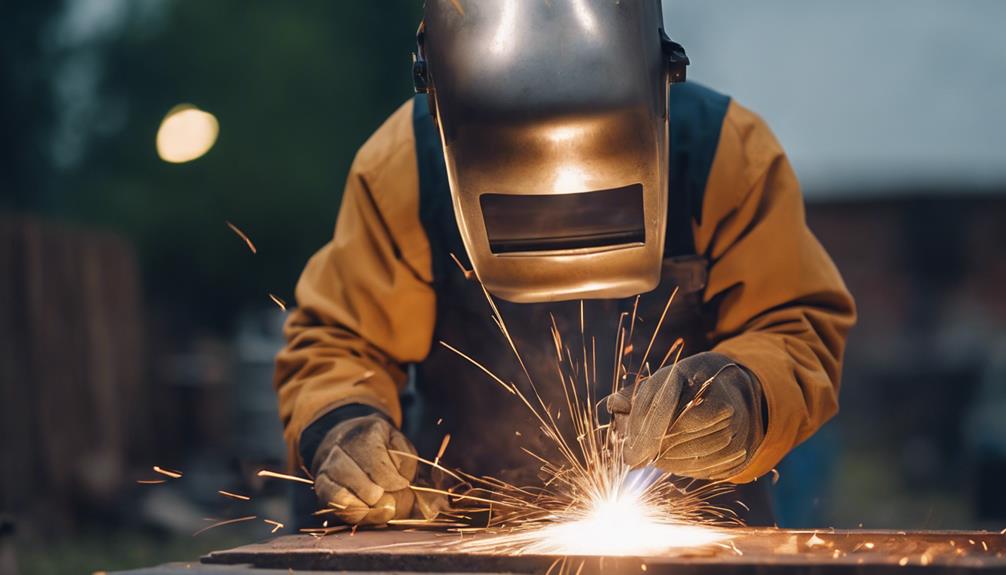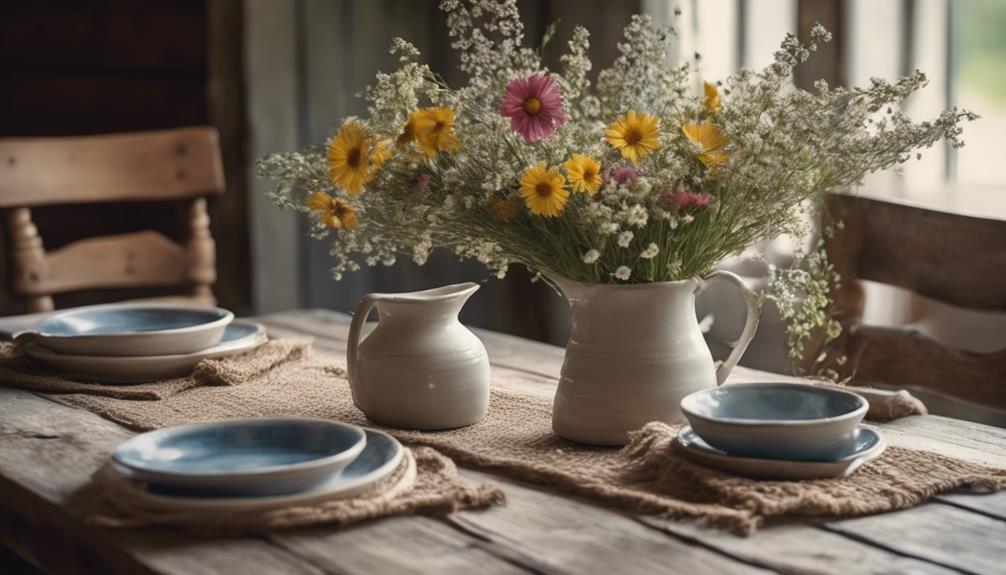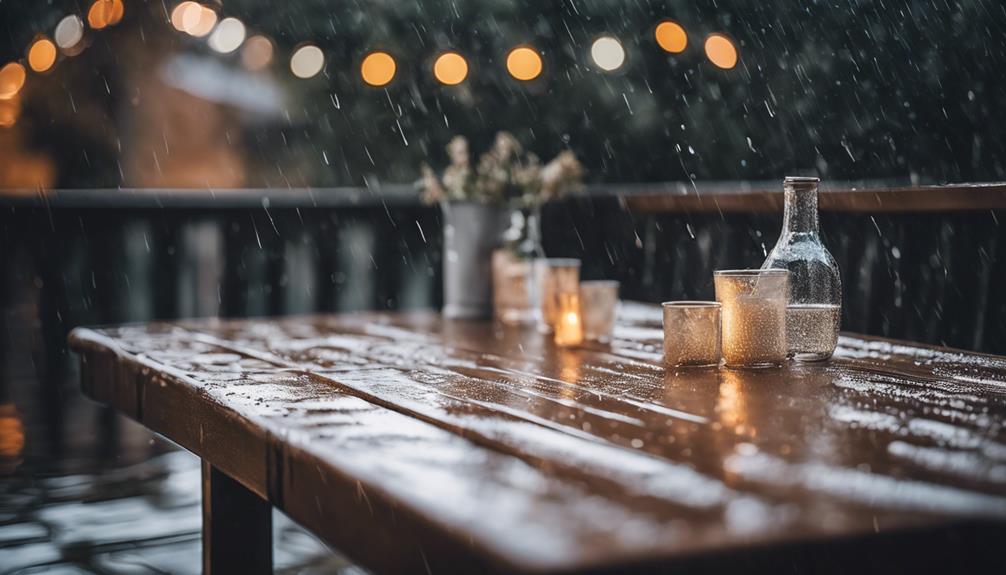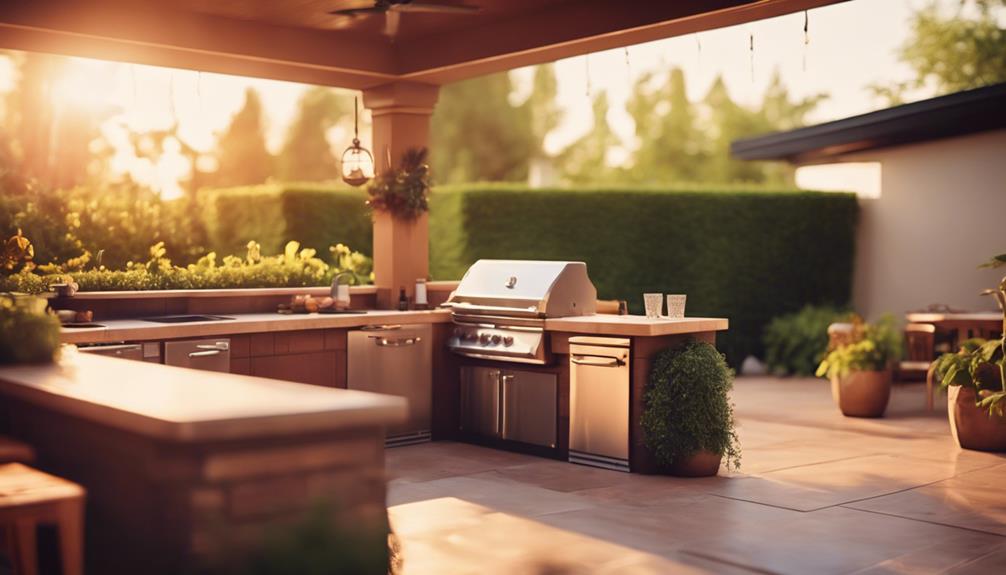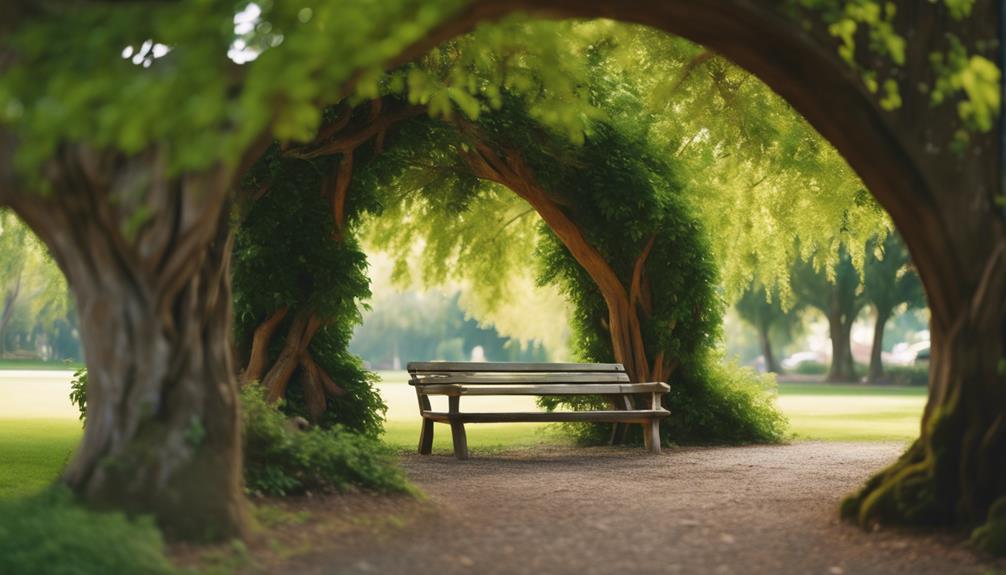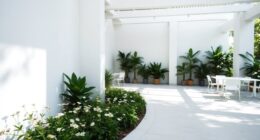When venturing into alfresco welding, which entails welding outdoors, different techniques are tailored for open-air environments like construction, pipelines, and repairs. It is common in industries where indoor welding is impractical. Stainless steel is often chosen for its resistance to corrosion and durability. Ensuring appropriate shielding gases and considering weather conditions are critical for successful welds. Remember to adjust welding parameters based on factors like wind, temperature, and humidity. Safety measures, such as using proper PPE and maintaining ventilation, are essential. Other uses include repairing structures, fabricating metal components, and joining materials. Weather fluctuations and wind disruptions pose challenges to alfresco welding.
Key Takeaways
- Alfresco welding adapts processes for outdoor settings.
- Techniques involve adjusting parameters based on weather conditions.
- Commonly used in construction, pipelines, and infrastructure projects.
- Ideal for repairing structures and fabricating metal components.
- Challenges include weather fluctuations affecting welding conditions.
Alfresco Welding Overview
Alfresco welding is commonly practiced outdoors in various environments, utilizing different welding processes adapted for open-air settings. This method is often employed in diverse projects such as construction, pipeline welding, maintenance and repairs in outdoor settings, and infrastructure development.
When working with materials like stainless steel in alfresco welding, it's important to select the correct welding process to achieve high-quality results. Stainless steel is a popular choice due to its corrosion resistance and durability, making it well-suited for outdoor applications where exposure to the elements is a concern.
Additionally, proper shielding gases, protective equipment, and considerations for weather conditions play a significant role in the success of alfresco welding operations. Despite the challenges posed by outdoor environments such as wind, rain, and sunlight, alfresco welding remains a versatile and essential technique for various industries.
Techniques for Alfresco Welding
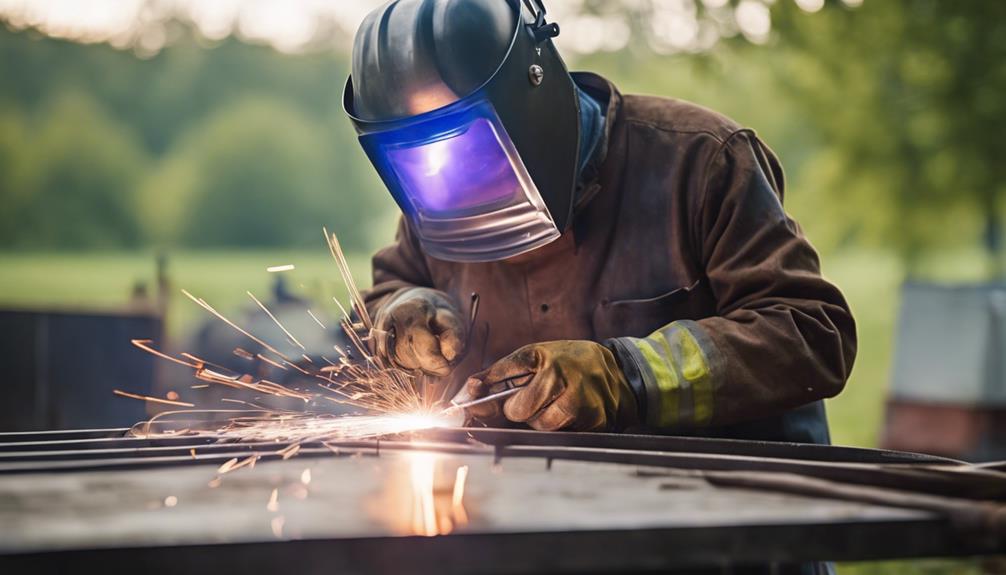
When welding outdoors, adapting your techniques to the surrounding environment is key to successful alfresco welding operations. To guarantee excellent results, it's vital to adjust welding parameters such as voltage, amperage, and travel speed based on prevailing conditions like wind, temperature, and humidity.
Shielding gas selection is vital in alfresco welding to prevent atmospheric contamination and maintain weld quality. Additionally, implementing safety measures such as using wind barriers and ensuring proper ventilation is important for a safe and effective welding process.
Proper storage and handling of consumables and equipment are also important aspects of alfresco welding. Storing welding materials in a dry and secure location helps maintain their integrity and performance. Regularly inspecting and maintaining equipment like welding machines and protective gear ensures they function correctly and safeguard the welder during outdoor operations.
Safety Measures for Alfresco Welding
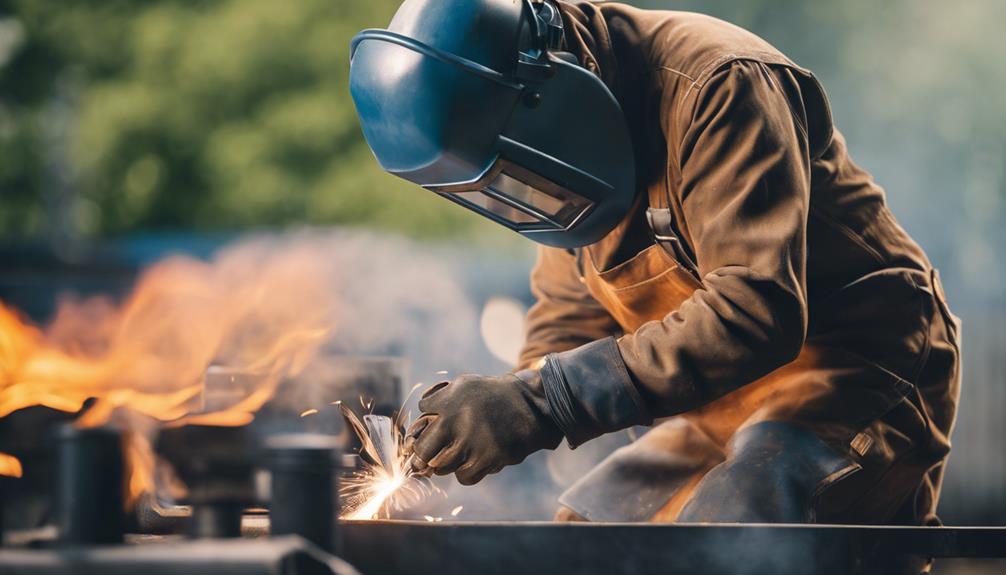
To guarantee your safety during outdoor welding operations, it is essential to implement effective safety measures for alfresco welding. First and foremost, wear appropriate personal protective equipment (PPE) such as welding helmets, gloves, and clothing to shield yourself from sparks, UV radiation, and heat. Additionally, maintain proper ventilation in outdoor welding areas to avoid the build-up of harmful fumes and gases that could pose health risks. Before commencing work, inspect the area for potential hazards like flammable materials, tripping hazards, and uneven surfaces to prevent accidents.
| Safety Measure | Description | Importance |
|---|---|---|
| Wear PPE | Utilize welding helmets, gloves, and clothing to protect against sparks, UV radiation, and heat. | Essential for personal safety |
| Maintain Proper Ventilation | Keep good airflow to prevent the accumulation of harmful fumes and gases in the outdoor welding environment. | Critical for health protection |
| Inspect Work Area for Hazards | Check for flammable materials, tripping hazards, and uneven surfaces to mitigate the risk of accidents during welding. | Essential for accident prevention |
Common Uses of Alfresco Welding
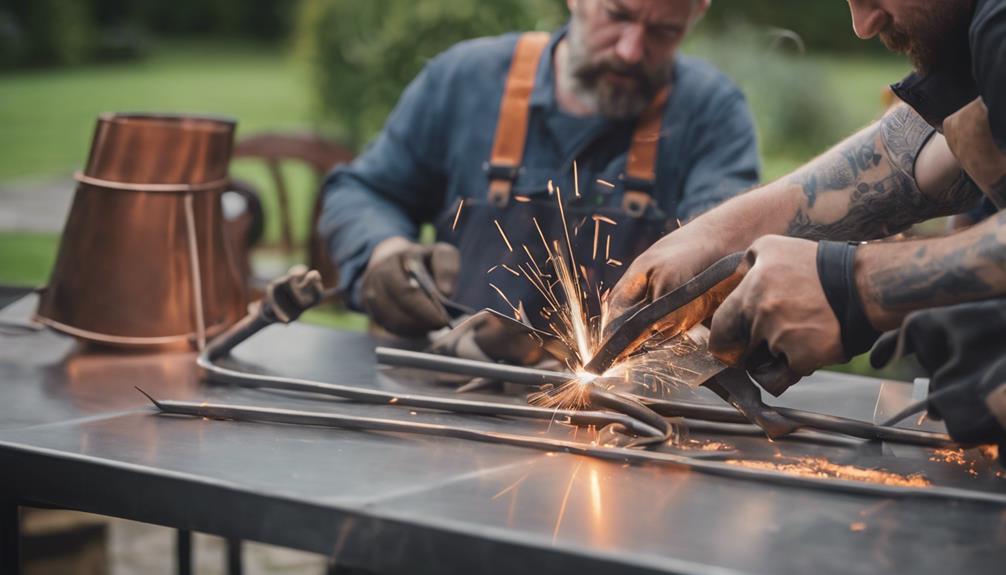
Outdoor welding is frequently employed in a variety of industries due to its versatility and adaptability to different environmental conditions. Common uses of alfresco welding include construction sites, shipyards, pipelines, and infrastructure projects. This method is preferred in outdoor environments where indoor welding may not be feasible.
Its ability to withstand various weather conditions makes it ideal for open-air applications. Alfresco welding plays an important role in repairing structures, fabricating metal components, and joining materials in outdoor settings. Welders performing alfresco welding must carefully consider factors such as wind, rain, and temperature fluctuations to guarantee successful welds.
Advantages and Challenges of Alfresco Welding
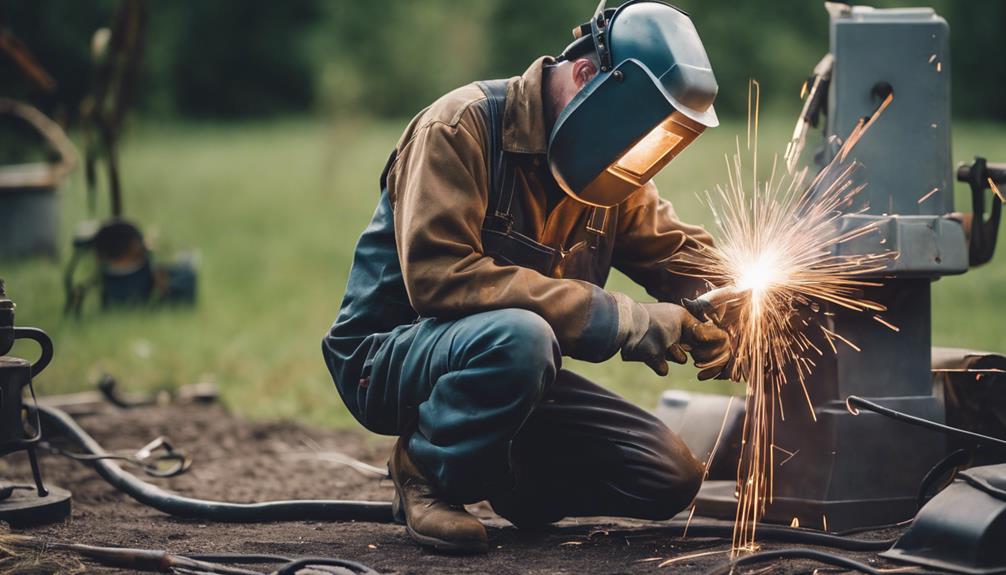
Alfresco welding presents both distinct advantages and challenges that welders must navigate when working outdoors amidst varying environmental conditions. One advantage of alfresco welding is the natural ventilation, which helps dissipate fumes and smoke more effectively than indoor welding setups. Additionally, the ample space outdoors allows for more flexibility and maneuverability while working on large projects.
In addition, natural lighting enhances visibility, making it easier to see the weld pool and guarantee precision during the welding process. However, alfresco welding also comes with its set of challenges. Weather fluctuations can pose a significant obstacle, affecting the temperature of the workpiece and the welding arc. Additionally, wind can disrupt the shielding gas, leading to improper gas coverage and potential weld defects.
Contamination from dust or debris is another challenge that welders face when working outdoors. To overcome these challenges, proper preparation, including setting up windbreaks and shielding barriers, as well as maintaining equipment meticulously, is essential for successful alfresco welding endeavors.
Frequently Asked Questions
What Are the 4 Methods of Welding?
Gas Metal Arc Welding (GMAW), Gas Tungsten Arc Welding (GTAW), Shielded Metal Arc Welding (SMAW), and Flux-Cored Arc Welding (FCAW) are the four main methods of welding. Each has unique characteristics, advantages, and disadvantages.
What Type of Welding Is Best for Aluminum?
For aluminum welding, Gas Metal Arc Welding (GMAW – MIG) and Gas Tungsten Arc Welding (GTAW – TIG) are top choices. They offer clean welds and precise control. Specialized equipment and shielding gases like argon are key.
What Is the Strongest Welding Method?
When you ask about the strongest welding method, think of GTAW/TIG welding as the iron fortress of welds. Its precision and control over heat create durable joints, making it the top choice for critical applications.
What's the Best Way to Weld Aluminum?
When welding aluminum, the optimal approach is often Gas Metal Arc Welding with a MIG welder using argon and helium. Guarantee proper wire electrode and shielding gas to prevent contamination. Control heat input and prep surfaces for strong welds.
What Is the Best Welding Process for Outside?
Looking to weld outdoors? Gas Metal Arc Welding (GMAW – MIG) is your top pick. Its high deposition rate, versatility, and weather tolerance make it ideal. Shielding gases like argon and helium protect against contamination, ensuring quality welds.
Conclusion
To summarize, alfresco welding is a versatile technique that offers unique advantages for outdoor projects.
While it requires specific safety measures and techniques, the ability to weld in open air settings provides flexibility and convenience for various applications.
Remember to always prioritize safety and follow industry guidelines when engaging in alfresco welding to guarantee successful and efficient results.
So, next time you're working on a project outside, consider giving alfresco welding a try for a refreshing change in your welding endeavors.
